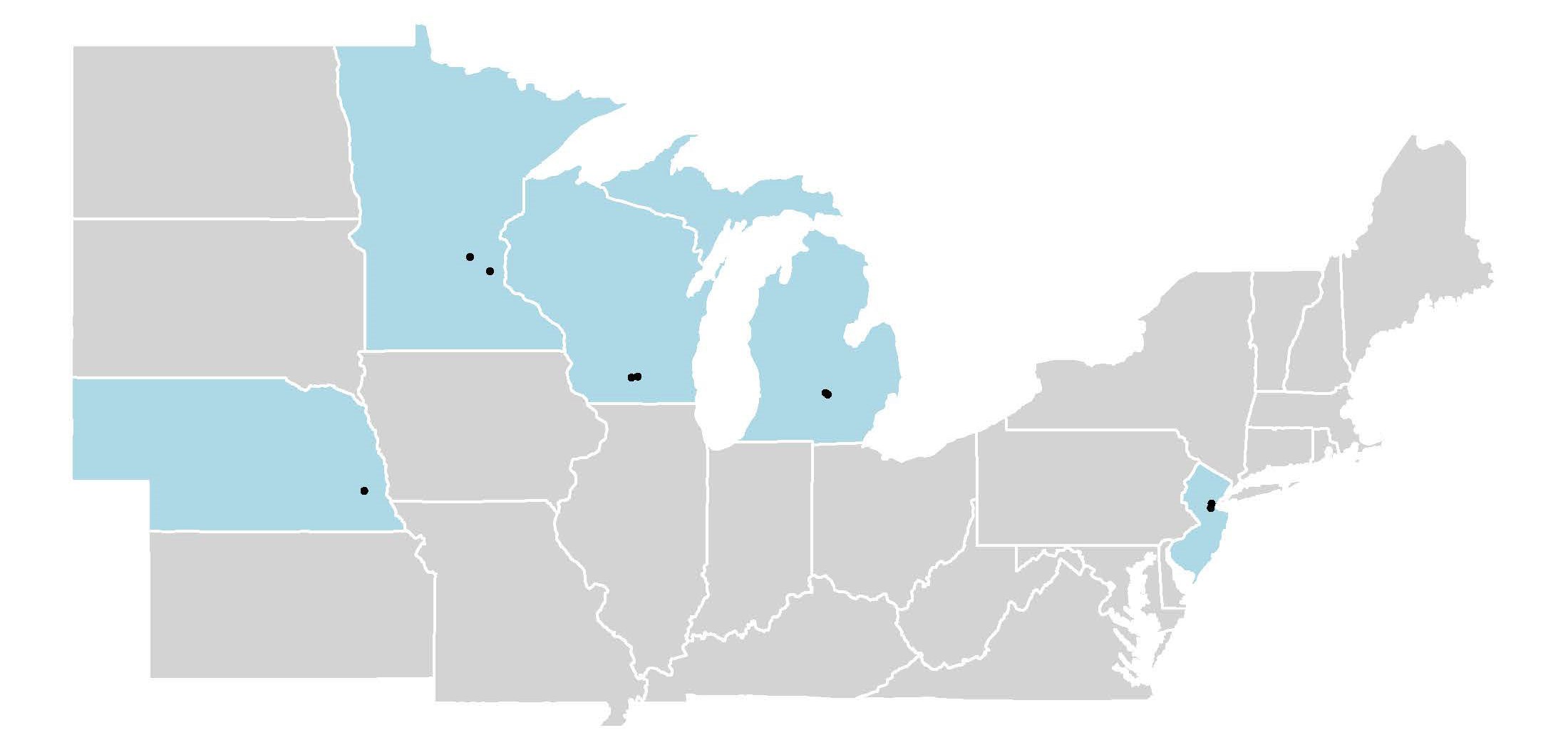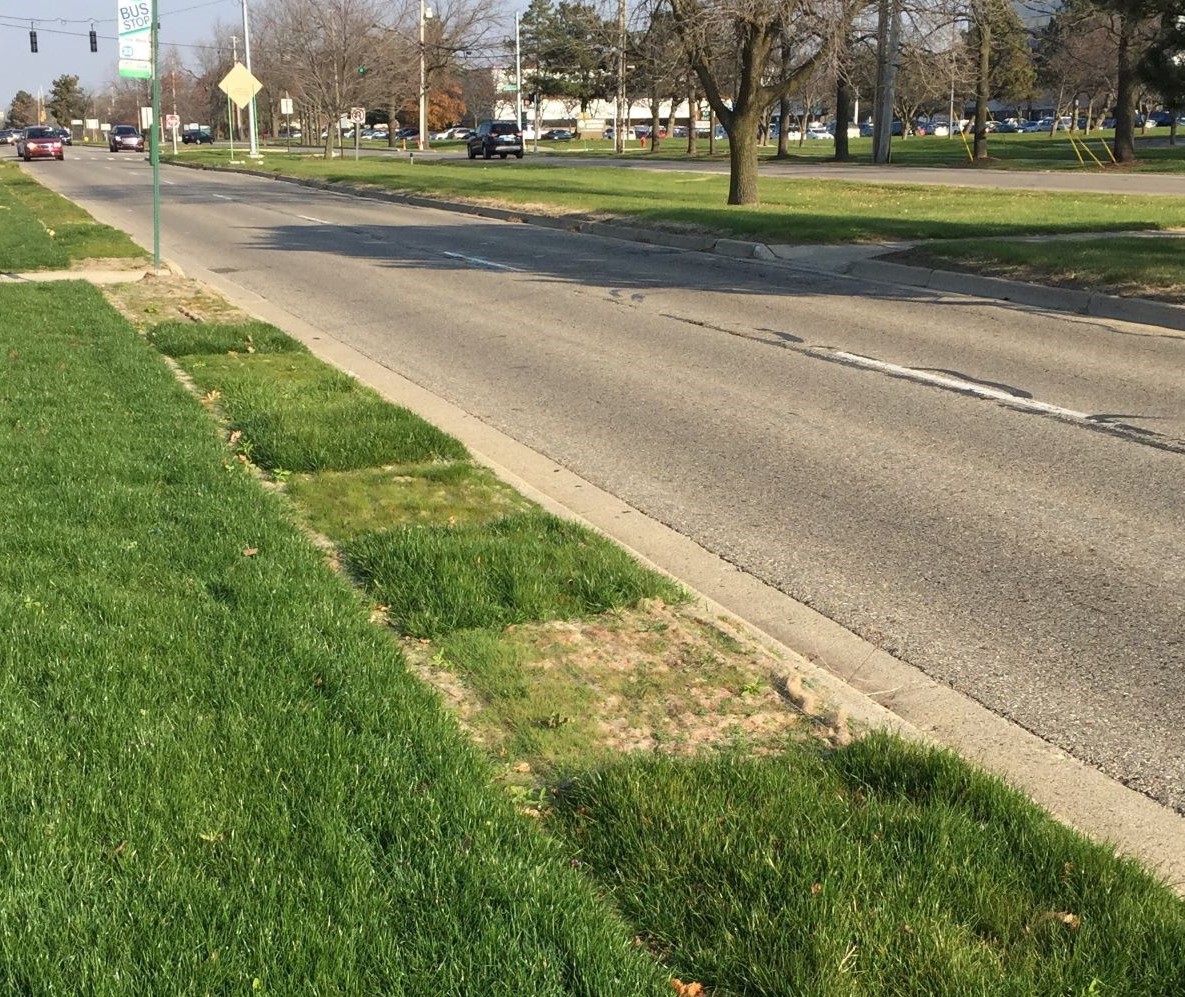Plant material
- 60 entries total
- 50 individual cultivars (chosen based on recommendations from turfgrass breeders and publicly-available data suggesting potential as a roadside turfgrass)
- 10 standard mixtures (two from each participating state based on current specifications for that state)
Trial locations
- 10 sites total
- Five states (MI, MN, NE, NJ, WI)
- One urban and one rural site in each state
- The urban sites were located on an urban or suburban street with a curb, having a daily traffic volume of between 10,000 and 15,000 vehicles
- The rural sites were located along a rural highway without a curb having a ditch that sloped away from the road with a daily traffic volume of at least 30,000 vehicles
Weather conditions
Precipitation was measured at each site and local temperature data was collected by a nearby weather station. See this table for specific weather information for each site.
Trial establishment
- Experimental design - randomized complete block with 3 replications
- Individual plots were 1.5 m long (parallel to the road) and 0.9 m wide (perpendicular to the road)
- Seeding rate was 2.0 pure live seeds cm-2
- Granular starter fertilizer was applied at approximately 49 kg P2O5 ha-1 at seeding
- Plots were covered with a germination blanket after seeding
Data collection
- Turfgrass performance assessed using the grid-intersect method with a grid of 60 intersections overlaid each plot
- An observation was made at each intersection (with each data point location recorded) as either living turf, weed, or bare soil / germination blanket
- Plots were assessed four times: late fall 2016, spring 2017 (after snowmelt and prior to turf green-up), fall 2017, and spring 2018

